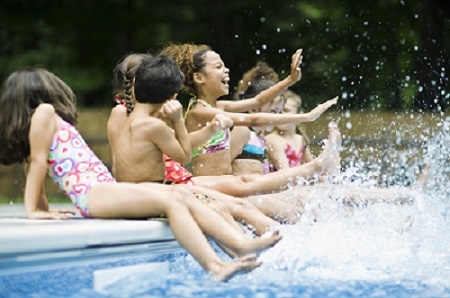Not including boating incidents, on average about 10 people die from drowning every day in the United States, according to Injury Facts® the annual statistical report on unintentional injuries produced by the National Safety Council.
Pool Safely This Summer; Take the Pledge
NSC and the Consumer Product Safety Commission are encouraging everyone to keep water safety top of mind and reduce child drowning in pools and spas. The Pool Safely campaign reminds everyone to follow five simple steps to stay safer in and around water. Take the Pool Safety Pledge today and get a free Pool Safely Toolkit.
The CDC reports more children ages 1 to 4 die from drowning than any other cause, and it's the second leading cause of death for children age 5-14:
● Most drowning incidents for children younger than 15 occur in residential locations
● Boys younger than 15 die from drowning at twice the rate as girls
● Emergency departments treat about 6,400 pool and spa injuries in children younger than 15 every year
Teens and Young Adults Often Don't Think About Water Safety
While drowning deathsare the leading cause of death for 1- to 4-year-olds, drownings continue to be the second leading cause of preventable death through age 15. According to NSC research, 423 people ages 5 to 24 drowned in 2021.
Swimmers should keep a few safety precautions in mind:
● Don't go in the water unless you know how to swim; swim lessons are available for all ages
● Never swim alone
● Learn CPR and rescue techniques
● Make sure the body of water matches your skill level; swimming in a pool is much different than swimming in a lake or river, where more strength is needed to handle currents
● If you do get caught in a current, don't try to fight it; stay calm and float with it, or swim parallel to the shore until you can swim free
● Swim in areas supervised by a lifeguard
● Don't push or jump on others
● Don't dive in unfamiliar areas
● Never drink alcohol when swimming; alcohol is involved in about half of all male teen drownings, according to KidsHealth.org
The Younger the Child, the Greater the Risk
 Most parents think water safety is first and foremost on their minds whenever they are enjoying summer activities with their young kids. But when the unthinkable happens, caregivers often say, “I only looked away for a second.”
Most parents think water safety is first and foremost on their minds whenever they are enjoying summer activities with their young kids. But when the unthinkable happens, caregivers often say, “I only looked away for a second.”
NSC statistics point to drowning as a leading cause of death for young children – mostly due to children falling into a pool or being left alone in the bathtub. Bathtubs, toilets and even buckets also can pose a danger for very young children.
Distractions Make for Tragedies
Parents are cautioned all the time about water safety, but drownings still occur. Always be aware and be in the present moment with your children. Following are a few water safety precautions:
● Never leave your child alone; if you have to leave, take your child with you
● Find age-appropriate swim lessons for your child, but keep in mind that lessons do not make your child "drown-proof"
● Lifeguards aren't babysitters; always keep your eyes on your child
● Don't let children play around drains and suction fittings
● Never consume alcohol when operating a boat, and always make sure everyone is wearing U.S. Coast Guard-approved life jackets
● Don't underestimate the power of water; even rivers and lakes can have undertows
● Always have a first aid kit and emergency contacts handy
● Get training in CPR
● If a child is missing, check the water first
Every pool, every lake and every warm summer day holds the possibility of new, fun summer experiences. All you need to add is your undivided attention.

 Most parents think water safety is first and foremost on their minds whenever they are enjoying summer activities with their young kids. But when the unthinkable happens, caregivers often say, “I only looked away for a second.”
Most parents think water safety is first and foremost on their minds whenever they are enjoying summer activities with their young kids. But when the unthinkable happens, caregivers often say, “I only looked away for a second.”